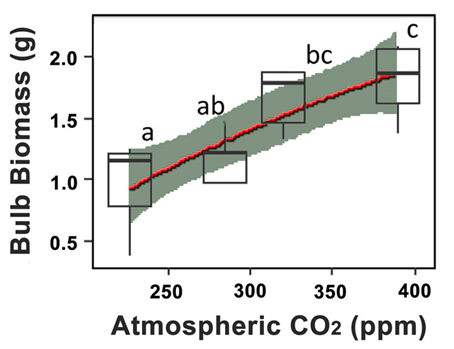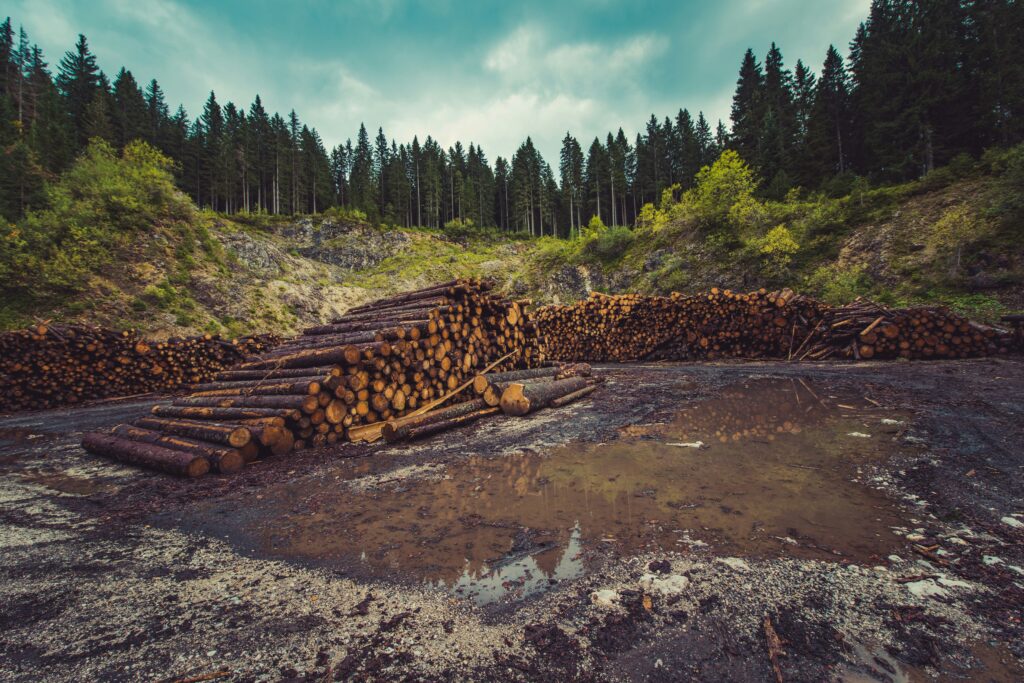From CO2Science: Climate alarmists have ramped up their efforts calling for the total elimination of all fossil-derived energy, claiming there is no downside to such action. But there is. This fact is made painfully obvious in a recent study by Faltein et al. (2020), who examined the impact of low levels of CO2 (relative to present, ambient CO2 air) on African wood-sorrel (Oxakis pes-caprae). O. pes-caprae was a key carbohydrate source for humans during the Middle Pleistocene, being regularly harvested by human gatherers for its edible underground storage organs (USOs). Given that atmospheric CO2 is a substrate of photosynthesis and growth, Faltein et al. were curious to learn how much the bulb biomass of African wood-sorrel would have been reduced (relative to the present) in the Middle Pleistocene and how such a reduction would have impacted efforts to harvest sufficient biomass to attain daily calorific requirements.
Paper reviewed: Faltein, Z., Esler, K.J., Midgley, G.F. and Ripley, B.S. 2020. Atmospheric CO2 concentrations restrict the growth of Oxalis pes-caprae bulbs used by human inhabitants of the Paleo-Agulhas plain during the Pleistocene glacials. Quaternary Science Reviews 235: 105731.
To accomplish their design, the four South African researchers grew specimens of O. pes-caprae for three months in mini open-top-chambers under average CO2 concentrations of 227, 285, 320 and 390 ppm. All plants received sufficient water and nutrients. Not surprisingly, Faltein et al. report that at the end of the experiment plants grown under reduced concentrations of CO2 exhibited “significantly decreased plant biomass and bulb yield” (see Figure 1). For example, the scientists say that under the lowest CO2 levels, “bulb biomass decreased by up to 80% compared to current ambient concentrations, while total plant biomass showed a two-fold decrease.” Naturally, such growth reductions were attributed to “the fundamental effects of low [CO2] on C3 photosynthetic physiology.”
With respect to the human impact of such growth reductions caused by low CO2, Faltein et al. note that lower CO2 concentrations “affect both the value of USOs as sources of carbohydrates and the effort that would have been required to harvest sufficient biomass to attain daily calorific requirements.” And in regard to the latter, they calculate “the time required to harvest 2000 calories was more than doubled when [CO2] was decreased from 400 to 180 ppm.”
In considering the above findings, it is clear that humans benefit from higher levels of atmospheric CO2, which increase plant yields and enhance available carbohydrate supply. Reducing the current CO2 concentration of the atmosphere, which has become a platform of far too many politicians and activists, would have devastating impacts on these two parameters, leading to massive reductions in global food supply, which would likely result in civil unrest and conflict.

Figure 1. Bulb biomass of Oxalis pescaprae plants grown under sub-ambient atmospheric CO2 concentrations for three weeks. The letters denote significant differences between treatments at P < 0.05. Adapted from Faltein et al. (2020).



This kind of research has been going on for 25 years or more, but not much notice is taken of it because it isn't saying what the climate change alarmists want to hear. See for example:
Effects of low and elevated CO2 partial pressure on growth and reproduction of Arabidopsis thaliana from different elevations, J. K. Ward & B. R. Strain, Plant, Cell and Environment 1997, vol 20, pp 254-260
This 1997 paper shows much the same results as the Oxalis pes-caprae paper reviewed above. BTW, A. thaliana is the botanists' fruit fly, i.e. a useful experimental vehicle which has never been cultivated and is therefore always in its original state.
CO2 is the basic ingredient of life on earth. Or "substrate" of life. We are all CARBON-BASED LIFEFORMS - from the simplest unicellular organism to Home Sapiens Sapiens. No carbon - no life. All life dies without CO2. Every fat, every protein, even our DNA has a carbon molecular backbone. Carbon is about 12-20% of the human body by weight. Only oxygen is higher. And most oxygen is contained in water. Life began in life luxuriant levels of 9000ppm CO2. More than twenty times today's concentrations. And CO2's been declining dangerously and inexorably ever since. CO2 is a follower in climate, not a cause. As eight hundred thousand years of ice core data leave no doubt. Any level of CO2 added below 2000ppm is a good green thing. That in science is known as the CO2 fertilization effect. And "fertilization" is an understatement. We call the environment "green" because of photosynthesis's green pigmented enzyme chlorophyll. The chemical formula for photosynthesis is sunlight, plus CO2, plus H2O gives sugar and atmospheric oxygen. (life depends on photosynthesis's production of high energy sugars and atmospheric oxygen. The whole animal Kingdom would be dead without it. We couldn't breathe. We would have nothing to eat.) Photosynthesis is the source of our carbon molecular backbone. It is not "a" source. It is "the" source. It is astonishing that education has become so poor that most people do not know these simple facts of life. The only reason that the general public is so ignorant of life's processes is that they are not being taught it. It isn't that complicated. Even grade school children are capable of understanding the basics. Even journalists and politicians are capable of understanding them, as well. And while education is learning to improve their curriculum, they should teach how our entire modern civilization is based on energy. 85% of which comes from coal, oil, and gas. And that fossil fuel use is replenishing the most important ingredient of life on earth - CO2.
Mr Bateman said it much better than I ever could
If we follow Dr. Patrick Moore's reasoning, historical rises in atmospheric CO2 have followed temperature rises, so CO2 cannot be causational. He also says that the recent levels of CO2 in the atmosphere before the industrial revolution were some of the lowest in the history of the planet, & that the overall trend during Earth's history for CO2 levels has been downwards. If it wasn't for manmade CO2 emissions this trend would eventually cause all life on Earth to die. If we stopped emitting CO2 we would eventually have to artificially generate it to maintain life on this planet. If there were no fossil fuels available at that time we would have to heat limestone or chalk in a solar furnace.
I totally agree.